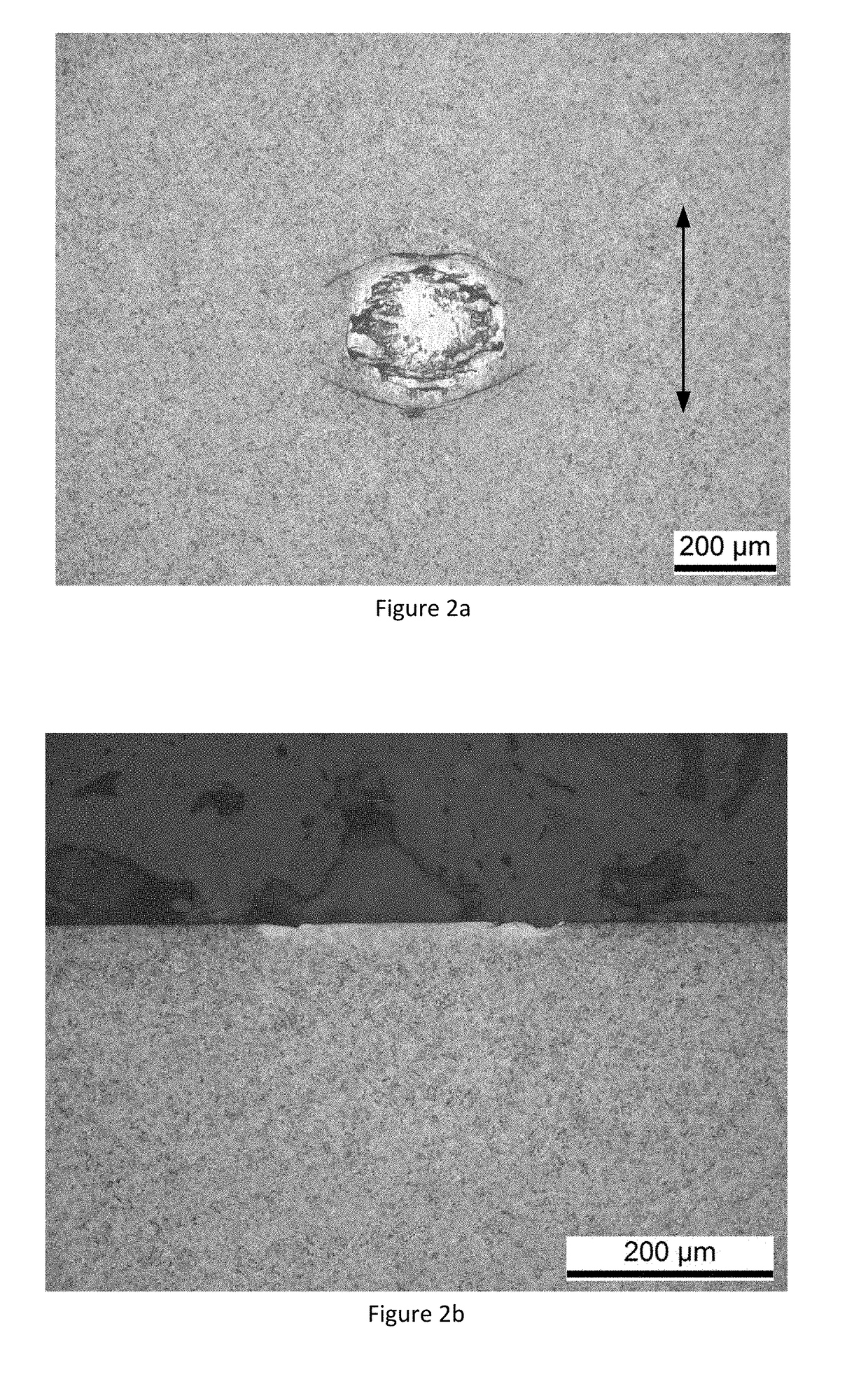Fatigue-resistant bearing steel
a technology of bearing steel and fatigue resistance, applied in the field of metalurgical field, can solve the problems of amorphous regions, cementite particles can sometimes shear and crack, and achieve the effects of improving the tempering resistance of the steel microstructure, suppressing excessive precipitation, and negligible solubility of carbides
- Summary
- Abstract
- Description
- Claims
- Application Information
AI Technical Summary
Benefits of technology
Problems solved by technology
Method used
Image
Examples
examples
[0099]A steel with the chemical composition: (wt. %) 0.84C-0.24Si-0.51Mn-2.92Cr-0.28Mo was used in the present work (Steel A). Chemical analysis of a sample made from Steel A revealed the presence of further elements: (wt. %) 0.003P-0.001S-0.01Ni-0.018Cu-0.029Al-0.004As-0.001Sn, as well as trace amounts of Ti, Pb, Ca, Sb and O. The balance is made of iron together with any unavoidable impurities. Steel A is suitable for use in the production of large-size bearing rings and has high hardenability. The expected Ideal Critical Diameter for the composition is 160.3 mm (see C. F. Jatczak: Hardenability in high carbon steels. Metallurgical Transactions Volume 4:2267-2277, 1973).
[0100]As a reference, a known steel with an equivalent level of hardenability was used, having the following composition: (wt. %) 0.96C-0.52Si-0.93Mn-1.86Cr-0.57Mo (Steel B). Chemical analysis of a sample made from Steel B revealed the presence of further elements: (wt. %) 0.003P-0.001S-0.01Ni-0.017Cu-0.029Al-0.003...
PUM
| Property | Measurement | Unit |
|---|---|---|
| size | aaaaa | aaaaa |
| temperature | aaaaa | aaaaa |
| grain size | aaaaa | aaaaa |
Abstract
Description
Claims
Application Information
 Login to View More
Login to View More - R&D
- Intellectual Property
- Life Sciences
- Materials
- Tech Scout
- Unparalleled Data Quality
- Higher Quality Content
- 60% Fewer Hallucinations
Browse by: Latest US Patents, China's latest patents, Technical Efficacy Thesaurus, Application Domain, Technology Topic, Popular Technical Reports.
© 2025 PatSnap. All rights reserved.Legal|Privacy policy|Modern Slavery Act Transparency Statement|Sitemap|About US| Contact US: help@patsnap.com


